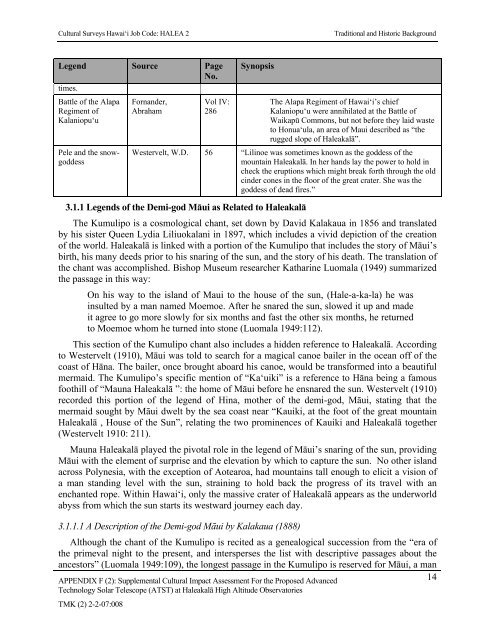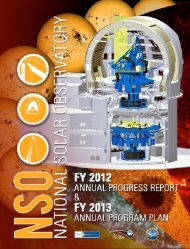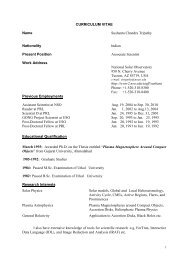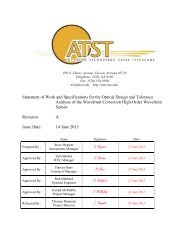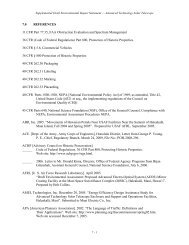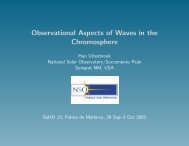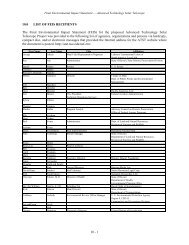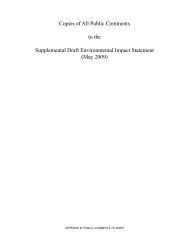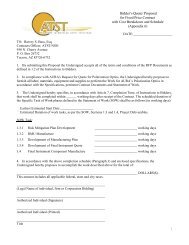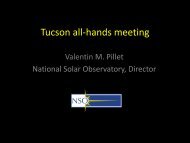F2 - ATST
F2 - ATST
F2 - ATST
Create successful ePaper yourself
Turn your PDF publications into a flip-book with our unique Google optimized e-Paper software.
Cultural Surveys Hawai‘i Job Code: HALEA 2Traditional and Historic BackgroundLegend Source PageNo.times.Battle of the AlapaRegiment ofKalaniopu‘uPele and the snowgoddessFornander,AbrahamVol IV:286SynopsisThe Alapa Regiment of Hawai‘i’s chiefKalaniopu‘u were annihilated at the Battle ofWaikapū Commons, but not before they laid wasteto Honua‘ula, an area of Maui described as “therugged slope of Haleakalā”.Westervelt, W.D. 56 “Lilinoe was sometimes known as the goddess of themountain Haleakalā. In her hands lay the power to hold incheck the eruptions which might break forth through the oldcinder cones in the floor of the great crater. She was thegoddess of dead fires.”3.1.1 Legends of the Demi-god Māui as Related to HaleakalāThe Kumulipo is a cosmological chant, set down by David Kalakaua in 1856 and translatedby his sister Queen Lydia Liliuokalani in 1897, which includes a vivid depiction of the creationof the world. Haleakalā is linked with a portion of the Kumulipo that includes the story of Māui’sbirth, his many deeds prior to his snaring of the sun, and the story of his death. The translation ofthe chant was accomplished. Bishop Museum researcher Katharine Luomala (1949) summarizedthe passage in this way:On his way to the island of Maui to the house of the sun, (Hale-a-ka-la) he wasinsulted by a man named Moemoe. After he snared the sun, slowed it up and madeit agree to go more slowly for six months and fast the other six months, he returnedto Moemoe whom he turned into stone (Luomala 1949:112).This section of the Kumulipo chant also includes a hidden reference to Haleakalā. Accordingto Westervelt (1910), Māui was told to search for a magical canoe bailer in the ocean off of thecoast of Hāna. The bailer, once brought aboard his canoe, would be transformed into a beautifulmermaid. The Kumulipo’s specific mention of “Ka‘uiki” is a reference to Hāna being a famousfoothill of “Mauna Haleakalā ”: the home of Māui before he ensnared the sun. Westervelt (1910)recorded this portion of the legend of Hina, mother of the demi-god, Māui, stating that themermaid sought by Māui dwelt by the sea coast near “Kauiki, at the foot of the great mountainHaleakalā , House of the Sun”, relating the two prominences of Kauiki and Haleakalā together(Westervelt 1910: 211).Mauna Haleakalā played the pivotal role in the legend of Māui’s snaring of the sun, providingMāui with the element of surprise and the elevation by which to capture the sun. No other islandacross Polynesia, with the exception of Aotearoa, had mountains tall enough to elicit a vision ofa man standing level with the sun, straining to hold back the progress of its travel with anenchanted rope. Within Hawai‘i, only the massive crater of Haleakalā appears as the underworldabyss from which the sun starts its westward journey each day.3.1.1.1 A Description of the Demi-god Māui by Kalakaua (1888)Although the chant of the Kumulipo is recited as a genealogical succession from the “era ofthe primeval night to the present, and intersperses the list with descriptive passages about theancestors” (Luomala 1949:109), the longest passage in the Kumulipo is reserved for Māui, a manAPPENDIX F (2): Supplemental Cultural Impact Assessment For the Proposed Advanced 14Technology Solar Telescope (<strong>ATST</strong>) at Haleakalā High Altitude ObservatoriesTMK (2) 2-2-07:008


